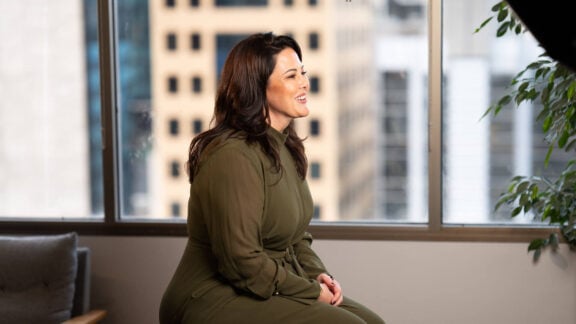An inflationary bump has put the government on the defensive as it seeks to assure Australian households Labor understands their pain and has the policy settings in place to ward off a dreaded rate rise.
The road back to an inflation rate acceptable to the Reserve Bank of Australia is proving bumpy, complicating forecasts about the next move in interest rates.
The four per cent inflation figure for May released on Wednesday jolted financial markets and spurred several economists to change their interest rate forecasts.
For squeezed borrowers, the wait for interest rate cuts is likely to be longer with economists now warning there’s a chance of a rate hike at the next bank board meeting in August.
Asked whether the May bump in prices meant an interest rate cut could be ruled out, Finance Minister Katy Gallagher said that while it wasn’t the government’s job to dictate rate moves its policy setting would help.
“The government’s job is to make sure we are doing what we can to put downward pressure on inflation but also trying to help out those cost of living pressures, which you rightly point out is the top issue facing households,” Senator Gallagher told ABC radio on Thursday.
The government budget measures starting from July 1 – including tax cuts, energy bill relief and cheaper medicines – will help ease those pressures and should feed through to the cost-of-living index, she added.
“Inflation is running higher than we would like for longer than we would like, but I should point out that it is continuing to track lower down from what it was when we came into government.”
In the meantime, banks and economists are pushing out their forecasts for expected rate cuts.
National Australia Bank now expects interest rates will start to come down from May 2025 – a much longer wait than the previously pencilled-in November 2024.
“The mix of slow growth and gradual progress on inflation reflects the RBA’s decision to embrace a ‘lower-for-longer’ approach – a lower rate peak compared to other advanced economies, resulting in a longer period at that peak,” chief economist Alan Oster said.
A hike at the August meeting was possible, Mr Oster added, but the more likely scenario was that the central bank would leave the 4.35 per cent cash rate unchanged – again – as inflation gradually slows alongside a weakening labour market.
A re-acceleration in the monthly inflation gauge, which is volatile and not as comprehensive as the quarterly release, was anticipated in May but the jump exceeded expectations.
The four per cent rise in the 12 months to May took annual inflation to its highest reading in six months and was above the consensus market forecast of 3.8 per cent.
The trimmed mean index rose 4.4 per cent, up from 4.1 per cent in April, but a separate measure of underlying inflation that strips out petrol and other volatile items moderated to four per cent from 4.1 per cent.
The RBC Capital Markets, Nomura and AMP Australia economic teams have also pushed out their expected start dates for interest rate cuts, after the inflation readout.
AMP chief economist Shane Oliver warned the central bank’s path to slowing the economy by enough to bring inflation down, while preserving the jobs market, was becoming even narrower.
“The ‘narrow path’ of doing too much and ending up in recession and doing too little and locking in high inflation appears to be narrowing,” Dr Oliver wrote in a client note.
Source: AAP








